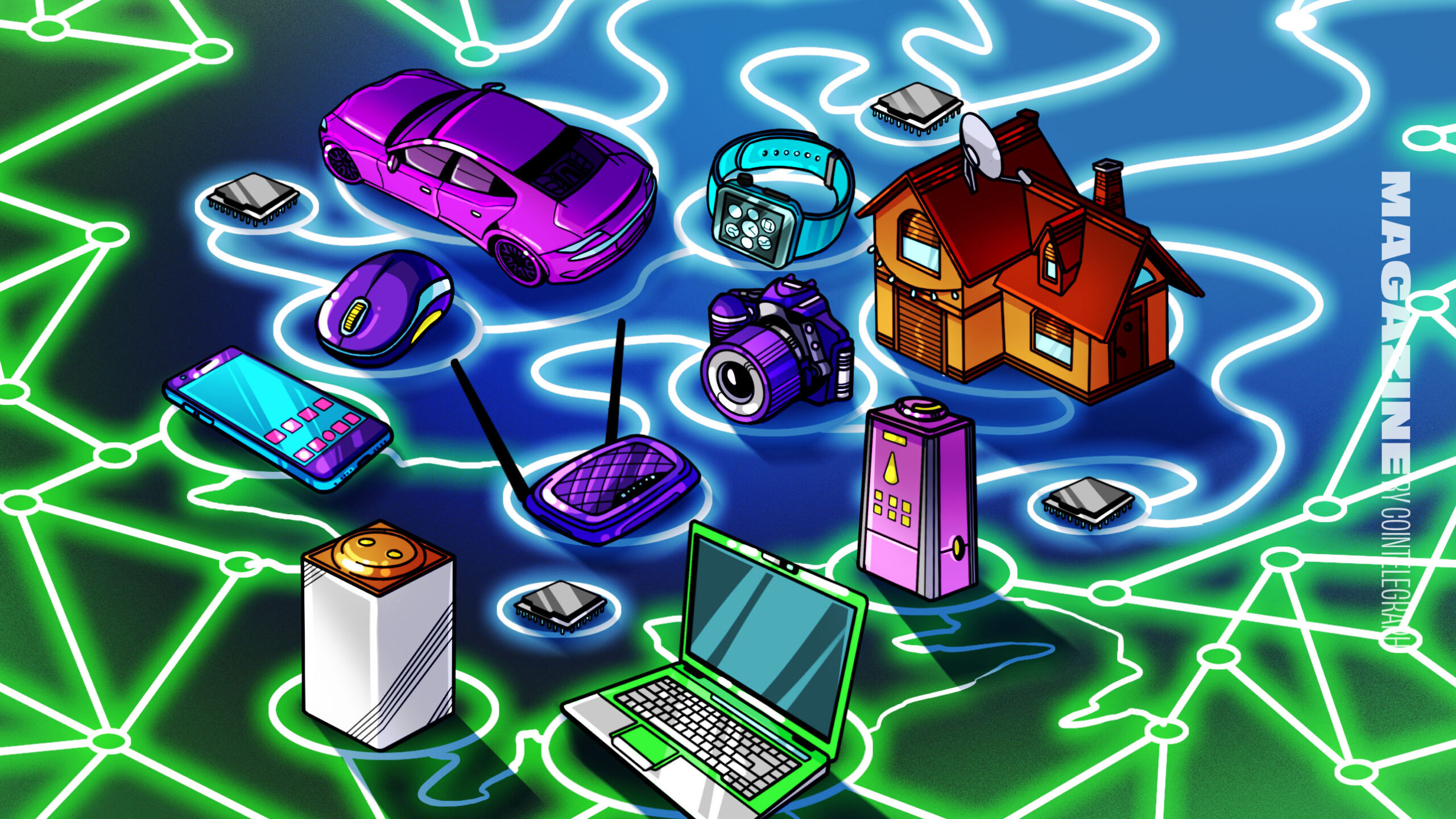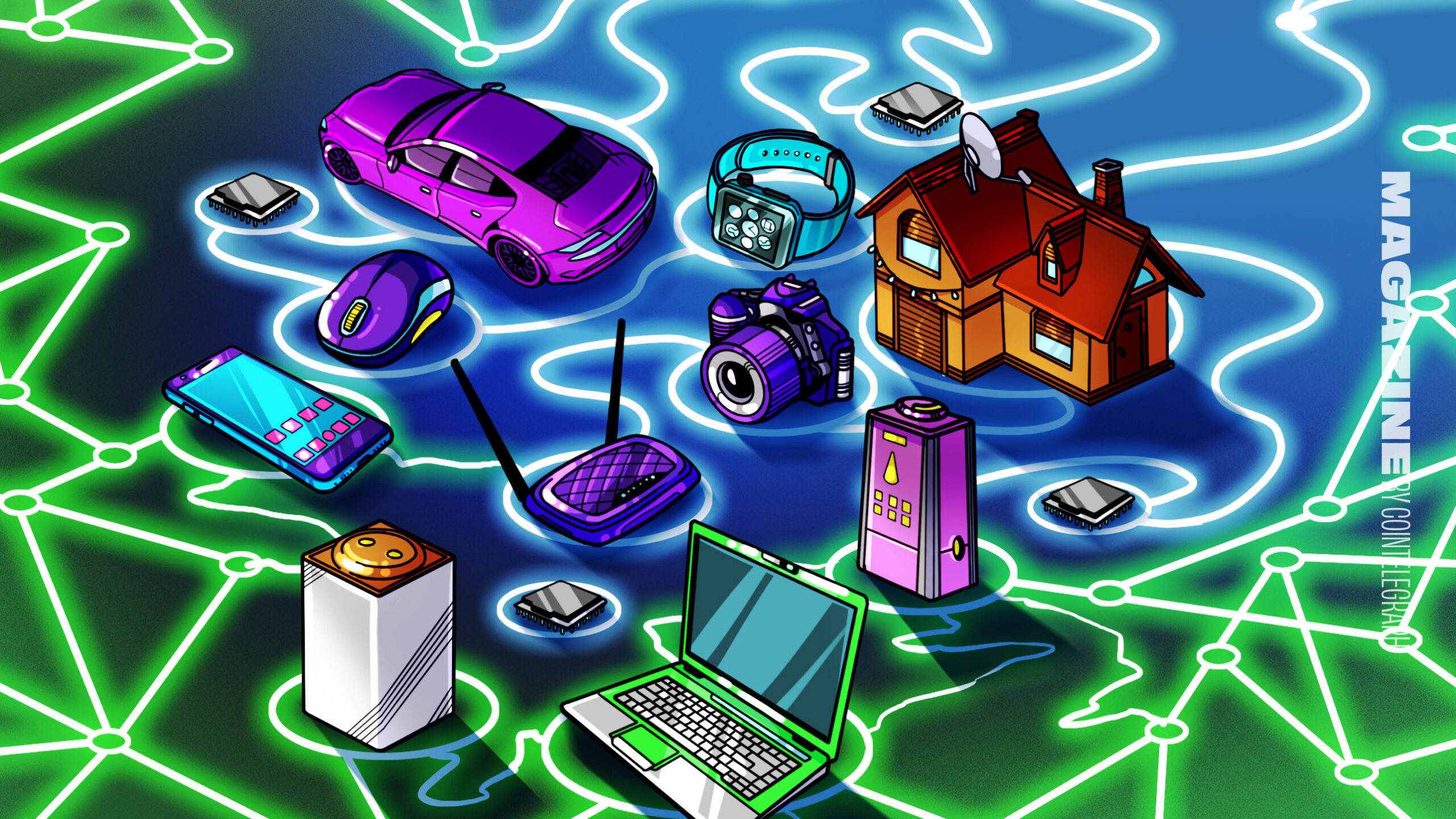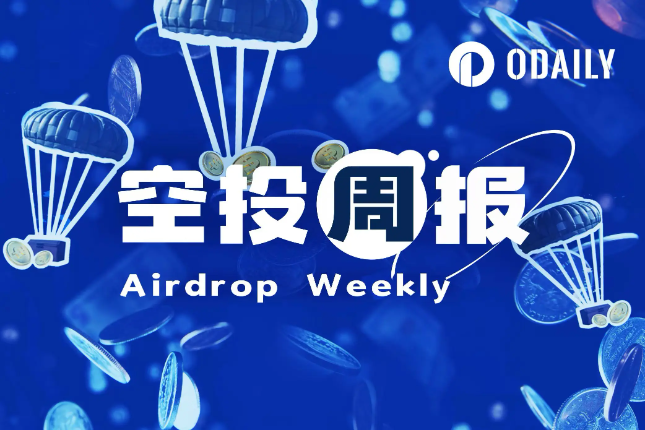Latest Solana News

6 months ago
XYO Token Launches on Solana, Expanding Cross-Chain Accessibility
XYO, a decentralized physical infrastructure network (DePIN), has successfully bridged from Ethereum to Solana, marking a significant step in its mission to enhance cross-chain accessibility. As of October 31, the XYO token is now tradable against popular tokens such as Solana (SOL) and USD Coin (USDC) on Solana-native decentralized exchanges (DEXs) like Jupiter and Raydium. This move is aimed at leveraging Solana's high throughput, low transaction costs, and scalability, which are essential for the growing DeFi ecosystem. Markus Levin, co-founder of XYO, emphasized that this integration allows holders of Solana-based tokens to easily trade into and out of XYO, thus accessing its extensive DePIN data ecosystem.
The XYO network operates over 8 million nodes across 150 countries, providing a robust infrastructure for verifying location and other real-world data for both Web2 and Web3 projects. DePINs are designed to decentralize various real-world infrastructures, including communications, data storage, and energy markets. According to a report by MV Global, DePINs are poised to become a significant use case in the crypto space, potentially onboarding millions of new users. The current ecosystem includes over 1,000 projects with a combined market capitalization exceeding $50 billion, highlighting the growing interest and investment in this sector.
Solana's low median transaction fee of $0.00064 makes it an attractive platform for DePIN projects like XYO, Helium, and Render. Analysts believe that Solana's parallel processing architecture and low fees contribute to its appeal for future DePIN developments. With the anticipated Firedancer upgrade, experts expect Solana to further solidify its position as the preferred choice for upcoming DePIN projects, enhancing its infrastructure and user experience in the decentralized finance landscape.

6 months ago
Grass: A New DePIN Project on Solana for Earning Passive Income
Grass is an innovative decentralized physical infrastructure network (DePIN) project built on the Solana blockchain. It allows users to share their idle internet bandwidth, enabling them to earn passive income while contributing to AI training companies. Participants receive Grass Points, which will later be used as criteria for airdrop distributions. The project aims to transform unstructured web data into structured datasets through its two main components: Grass nodes and Sovereign Data Rollup, which work together to facilitate data sourcing and transformation.
The Grass project has successfully raised $4.5 million through two funding rounds, with notable investors including Polychain Capital and Tribe Capital. The development team remains largely anonymous, with Andrej Radonjic, co-founder of Wynd Network, being the only member to disclose his identity. Grass is also partnering with Solana Phone – Saga to integrate its application into mobile devices, as well as Alignment Lab AI, which focuses on developing large language models. This collaboration is expected to enhance the project's capabilities and reach.
To participate in the upcoming airdrop, users must register as bandwidth providers and follow a series of installation steps. The project has implemented a referral system that incentivizes users to invite others, allowing them to earn additional points based on their referrals' activities. However, participants are advised to exercise caution, as there are inherent risks associated with sharing bandwidth and installing the necessary software. Overall, Grass presents an accessible opportunity for users to engage in the blockchain ecosystem while contributing to the advancement of AI technologies.

6 months ago
The Rise of Decentralized Physical Infrastructure Networks in Crypto
Decentralized Physical Infrastructure Network (DePIN) is emerging as a significant trend in the cryptocurrency space, characterized by its integration of blockchain technology with the Internet of Things (IoT). DePIN projects aim to connect and manage physical devices that gather and share data, such as wireless networks and energy grids. However, a critical question arises: to what extent do these projects genuinely utilize blockchain networks? The challenge lies in the sheer volume of data generated by these networks, which necessitates high-throughput blockchain solutions. Notably, Helium, a prominent DePIN project, transitioned from its own blockchain to Solana in April 2023 to leverage its speed, yet even Solana struggles to meet the real-time computational demands of DePIN applications.
Shuyao Kong, co-founder of the upcoming MegaETH, highlights that existing DePIN projects are not entirely on-chain, indicating a reliance on hybrid structures that combine off-chain computations with on-chain data recording. This approach raises concerns about whether these projects are merely using blockchain as a marketing strategy to attract investments. The inefficiencies and costs associated with fully on-chain applications lead many projects to adopt a model where off-chain computations are conducted, and only the results are recorded on-chain. This hybrid model allows for better scalability and performance while still leveraging the trustless nature of blockchain for coordination among numerous devices.
As the DePIN landscape evolves, experts like Zhe Wang and Jeremy Frank suggest that while current blockchain architectures cannot fully support the real-time demands of DePIN projects, there is potential for growth. Future developments may focus on specialized architectures tailored to the unique computational requirements of various DePIN applications. This could lead to the creation of modular execution environments optimized for tasks such as real-time biometric processing or large-scale data management. Ultimately, the success of DePIN will hinge on striking a balance between on-chain and off-chain processes, ensuring both efficiency and reliability in decentralized infrastructure management.

6 months ago
The Challenges and Future of DePIN in Blockchain Technology
Decentralized Physical Infrastructure Network (DePIN) is emerging as a significant narrative in the blockchain space, often described as the "Internet of Things (IoT) with a blockchain twist." These projects aim to connect and manage physical devices, such as energy grids and wireless networks, which generate vast amounts of data. However, the current blockchain infrastructure struggles to keep pace with the demands of DePIN applications. For instance, Helium, a notable DePIN project, transitioned from its own blockchain to Solana in April 2023, yet even Solana's high throughput capabilities are insufficient for real-time computations required by many DePIN projects.
The reliance on offchain computation is a common theme among DePIN projects. As Shuyao Kong, co-founder of MegaETH, points out, existing DePIN applications are not fully onchain due to inefficiencies and costs. While some projects may use blockchain as a marketing strategy, the reality is that they often utilize a hybrid approach, processing computations offchain and recording results onchain. This is particularly critical for executor devices, which require immediate responses, unlike sensors that can tolerate some latency. The use of blockchain in DePIN primarily serves to coordinate activities among numerous devices in a trustless manner, adding a financial incentive layer through token rewards for contributors.
Looking ahead, the future of DePIN projects will likely involve a balance between onchain and offchain processes. Current blockchain architectures are not equipped to handle the real-time demands of DePIN applications fully. However, as scalability improves, we may see an increase in onchain functionalities. Experts suggest that future DePIN projects will evolve towards modular architectures tailored for specific computational needs, such as real-time processing or large-scale data storage. This evolution is essential for the successful integration of blockchain technology into the DePIN ecosystem, ensuring that it meets the diverse requirements of various applications.

6 months ago
Phantom Wallet Faces Downtime Amid GRASS Token Airdrop Surge
On October 28, the Phantom wallet provider experienced significant downtime lasting nearly three hours, coinciding with a surge in demand for the GRASS token airdrop. Users reported issues such as missing balances and transaction failures on social media platforms. The downtime began at 1:36 PM UTC and was resolved by 4:20 PM UTC, marking the second service interruption for Phantom within the month. Earlier in October, a brief 8-minute outage was recorded on the 3rd. In response to the incident, Phantom's team assured users that they would actively monitor the situation and implement measures to prevent future occurrences.
The GRASS tokens are part of a decentralized physical infrastructure network known as Grass, which operates on the Solana blockchain. This network incentivizes users by rewarding them for lending unused internet bandwidth, which is then utilized to enhance artificial intelligence models. The first airdrop of GRASS tokens will distribute 100 million tokens, accounting for 10% of the total supply. Following the airdrop's launch, the price of GRASS experienced volatility, initially dropping by 28% to $0.65 before recovering slightly to $0.71 at the time of reporting.
Despite the issues faced by Phantom, the Solana network itself remained fully operational throughout the downtime. Data from Solana Status indicated that the network maintained total uptime over the past 90 days. The timing of Phantom's service disruption, just minutes after the GRASS token claim went live, has led to speculation about a correlation between the two events, as users rushed to claim their rewards. This incident highlights the challenges faced by wallet providers during high-demand events in the cryptocurrency space.

6 months ago
Upcoming Airdrops and Funding Rounds in Blockchain Projects
In the latest developments in the blockchain space, several projects have announced airdrops and funding rounds that are set to take place from October 21 to October 27. One of the highlights is Ethereum L2 Scroll, which has opened its first airdrop application, allocating 7% of its total SCR supply. This airdrop targets community participants, ecosystem projects, industry contributors, and global community organizers. Scroll has successfully raised over $80 million in funding through various rounds, with significant contributions from Polychain and Bain Capital Crypto, among others.
Another noteworthy project is Grass, a Depin initiative on Solana that integrates AI technology. Grass has announced its Airdrop One, distributing 100 million GRASS tokens, representing 10% of its total supply. The allocation is designed to reward users who have earned Grass points and those who hold specific NFTs. Grass has raised over $4.5 million in funding, with its latest round led by Polychain Capital. The airdrop applications for Grass will open on October 28, 2024, creating excitement among its user base.
Additionally, Kelp DAO, a re-staking protocol based on EigenLayer, has opened airdrop applications for SCR tokens. The project raised $9 million in a private funding round earlier this year. Jupiter, a DEX aggregator, has also launched its Active Staking Rewards, distributing JUP and CLOUD tokens to active voters. The airdrop landscape is further enriched by projects like ALIENX and Ordzaar, which are also rolling out their airdrop initiatives. As these projects continue to innovate and engage their communities, the upcoming weeks promise to be significant for blockchain enthusiasts and investors alike.

6 months ago
Roam: Pioneering Decentralized WiFi Roaming and Telecom Infrastructure
Roam, a decentralized WiFi roaming network, is emerging as a key player in the DePIN (Decentralized Physical Infrastructure Network) ecosystem. Unlike other projects that focus on niche areas, Roam aims to create a global open wireless network that supports decentralized telecom services. A significant challenge in decentralized systems is the manipulation of location data, particularly in gaming, where users exploit GPS systems to bypass geographic restrictions. Roam addresses this issue by employing decentralized identities (DIDs) and verifiable credentials (VCs) to ensure accurate GPS data, thereby reducing the risks associated with location-based exploits.
Currently operational in over 190 countries with around 750,000 self-deployed nodes, Roam connects users to a vast network of 3.5 million OpenRoaming™ nodes. The Roam app facilitates seamless connectivity, allowing users to automatically connect to available nodes without repeated logins. Central to Roam's protocol is its user identity verification system, which creates a digital identity upon app installation. This system ensures that user identities are verified each time they access a WiFi node, enhancing security and privacy across the network.
Roam's ambitions extend beyond WiFi services, as it seeks to establish itself as a decentralized telecom data layer, similar to how Layer 1 blockchains provide infrastructure for decentralized applications. The network collects and records user data on the Solana blockchain, contributing to a decentralized ledger of telecom data. Roam also encourages community participation through a mining system that rewards users with Roam Points for operating WiFi nodes. With a vision to become a public utility within the DePIN sector, Roam is poised to play a crucial role in the future of decentralized networks, fostering an open-access model that attracts more projects to its ecosystem.

6 months ago
Musk to Mars Memecoin Launch Sparks Investor Excitement
The launch of Musk to Mars (MUSKMARS), a new memecoin on the Solana blockchain, has generated significant excitement among investors. With predictions suggesting a potential price surge of over 16,000% in the coming days, early adopters are eager to capitalize on this opportunity. The anticipated listing of MUSKMARS on various cryptocurrency exchanges is expected to attract millions of new investors, creating a buying frenzy that could drive the price higher. This scenario mirrors the explosive growth seen with previous memecoins like Shiba Inu (SHIB) and Dogecoin (DOGE), which turned early investors into multi-millionaires.
Currently, Musk to Mars is only available for purchase on Solana's decentralized exchanges, such as Jup.ag and Raydium.io. The coin launched with more than $8,000 in liquidity, providing it with a competitive edge over many other new memecoins. Investors looking to buy MUSKMARS must connect their wallets, such as Solflare, MetaMask, or Phantom, and swap Solana for the memecoin using its contract address. This process is relatively straightforward, and those without a wallet can set one up quickly to begin trading.
The ongoing trend of investing in new Solana memecoins comes as larger memecoins like SHIB, DOGE, and DogWifHat (WIF) have shown signs of stagnation. As these established coins trade sideways, many investors are shifting their focus to the potential high returns offered by new entrants like MUSKMARS. While these memecoins lack inherent utility and value, the allure of rapid price increases continues to attract speculative investors hoping to replicate the success of earlier memecoins. Should MUSKMARS follow a similar trajectory, it could pave the way for a new generation of memecoin millionaires in the near future.

6 months ago
Studio369 Moves MetalCore to Solana Blockchain for Enhanced Gaming Experience
Game development company Studio369 has announced the migration of its mech shooter title MetalCore to the Solana blockchain, aiming to enhance the gaming experience through faster on-chain transactions. As of October 24, the Solana blockchain is processing an impressive average of about 3,000 transactions per second, a key performance metric that underscores its capabilities. MetalCore will leverage Solana Labs' GameShift platform, which integrates a storefront and payment systems for in-game purchases. This free-to-play open-world game features both player-versus-player (PvP) and player-versus-environment (PvE) battles, allowing players to acquire assets from defeated opponents and convert them into Web3 assets for trading.
The migration to Solana comes as the network has been attracting various protocols looking to improve scalability and reduce costs. Studio369's decision reflects a broader trend, as other projects like MetaBlox's Roam network and the decentralized wireless communications protocol Helium have also transitioned to Solana for its faster transaction speeds and scalability. With the gaming sector increasingly gravitating towards blockchain technology, Solana's infrastructure is positioned to support these developments effectively.
Despite its advantages, Solana has faced challenges, including significant periods of downtime that have raised concerns about its reliability. The latest outage, which lasted about five hours, occurred on February 6, 2024. In response to these issues, the Solana Foundation is working on the Firedancer upgrade, with a full version expected in 2025 and interim updates to manage the growing network activity. As Solana continues to evolve, it remains a focal point for gaming and decentralized infrastructure projects seeking robust blockchain solutions.

6 months ago
Solana's Innovations Overlooked in EVM-Biased Report
In a recent analysis of a16z's report on the "State of the Crypto Industry," Lily Liu, Chair of the Solana Foundation, highlights a notable EVM bias that overlooks Solana's impressive achievements in transaction fees, NFTs, and the DeFi market. Despite Solana leading in NFT addresses and transaction volume over the past year, the report fails to acknowledge significant innovations in decentralized physical infrastructure networks (DePIN), such as Helium and Hivemapper, which thrive within the Solana ecosystem. Liu argues that the report's binary framework, which positions EVM and non-EVM ecosystems as oppositional, misrepresents the true landscape of blockchain development and user engagement.
Liu emphasizes the importance of transaction fees as a more meaningful metric for assessing ecosystem activity and health, rather than relying solely on active addresses or Total Value Locked (TVL). Since introducing a fee market, Solana's transaction fee market share has surged from below 1.5% to consistently above 10%, peaking at 25% in July 2024. This shift indicates a growing economic value within the Solana ecosystem, narrowing the gap with Ethereum when considering Real Economic Value (REV). Furthermore, Liu critiques the report's gaming sector analysis, which fails to adequately include non-EVM networks like Solana, leading to incomplete comparisons that do not reflect the full blockchain gaming ecosystem.
Additionally, Liu points out that the report's focus on TVL for DeFi comparisons is insufficient, as it overlooks critical metrics such as transaction volume. While Solana's TVL is only 10% of Ethereum's, its monthly DEX transaction volume often exceeds that of Ethereum, highlighting its capital efficiency. Liu also notes that Solana's low transaction costs have driven significant consumer behavior changes, exemplified by the success of platforms like Drip Haus. The absence of DePIN innovations within the report raises questions about its comprehensiveness, as groundbreaking projects like Helium and Hivemapper are primarily developing within the Solana ecosystem, showcasing the real-world applications of decentralized networks.
Signup for latest DePIN news and updates